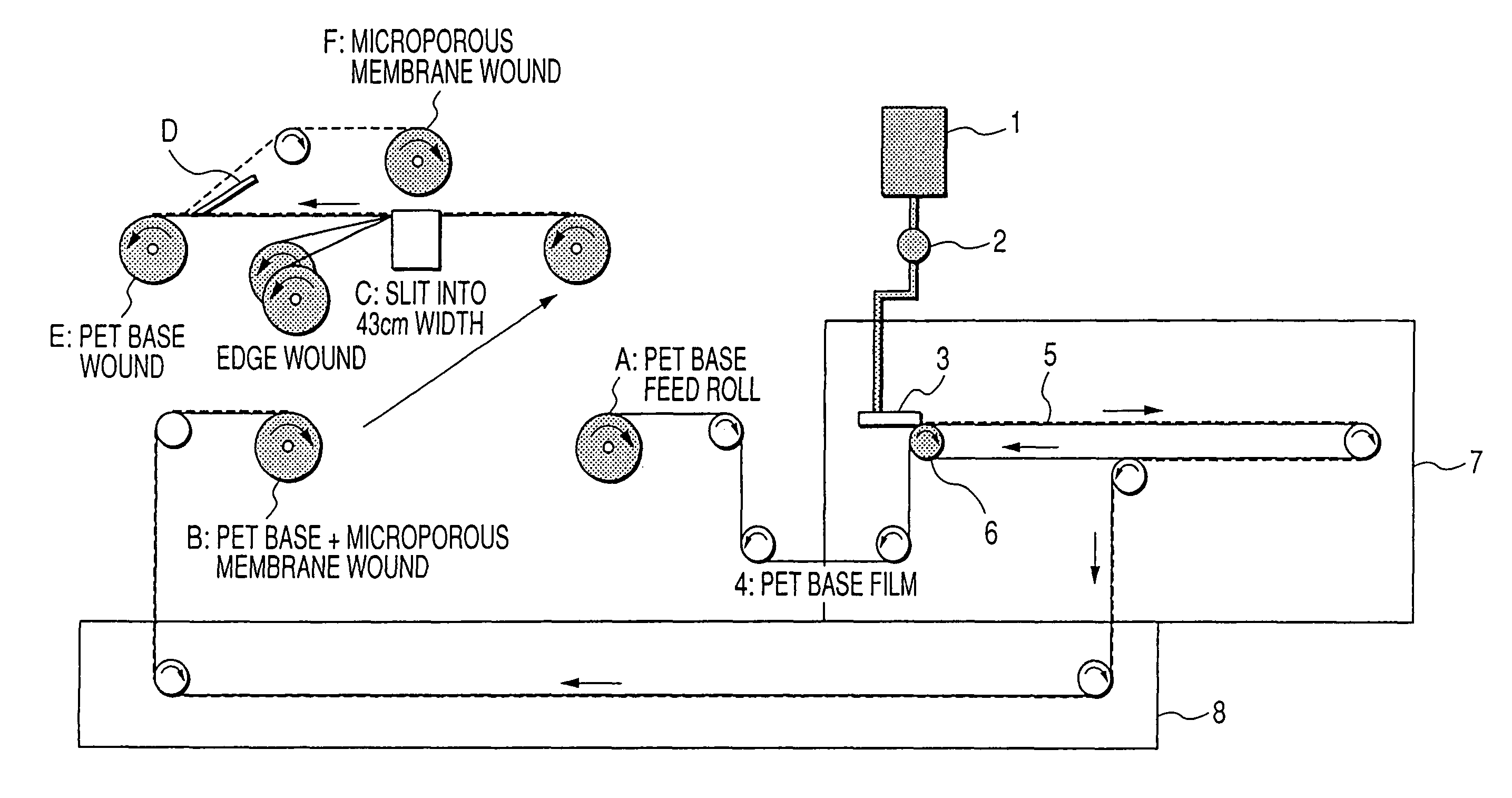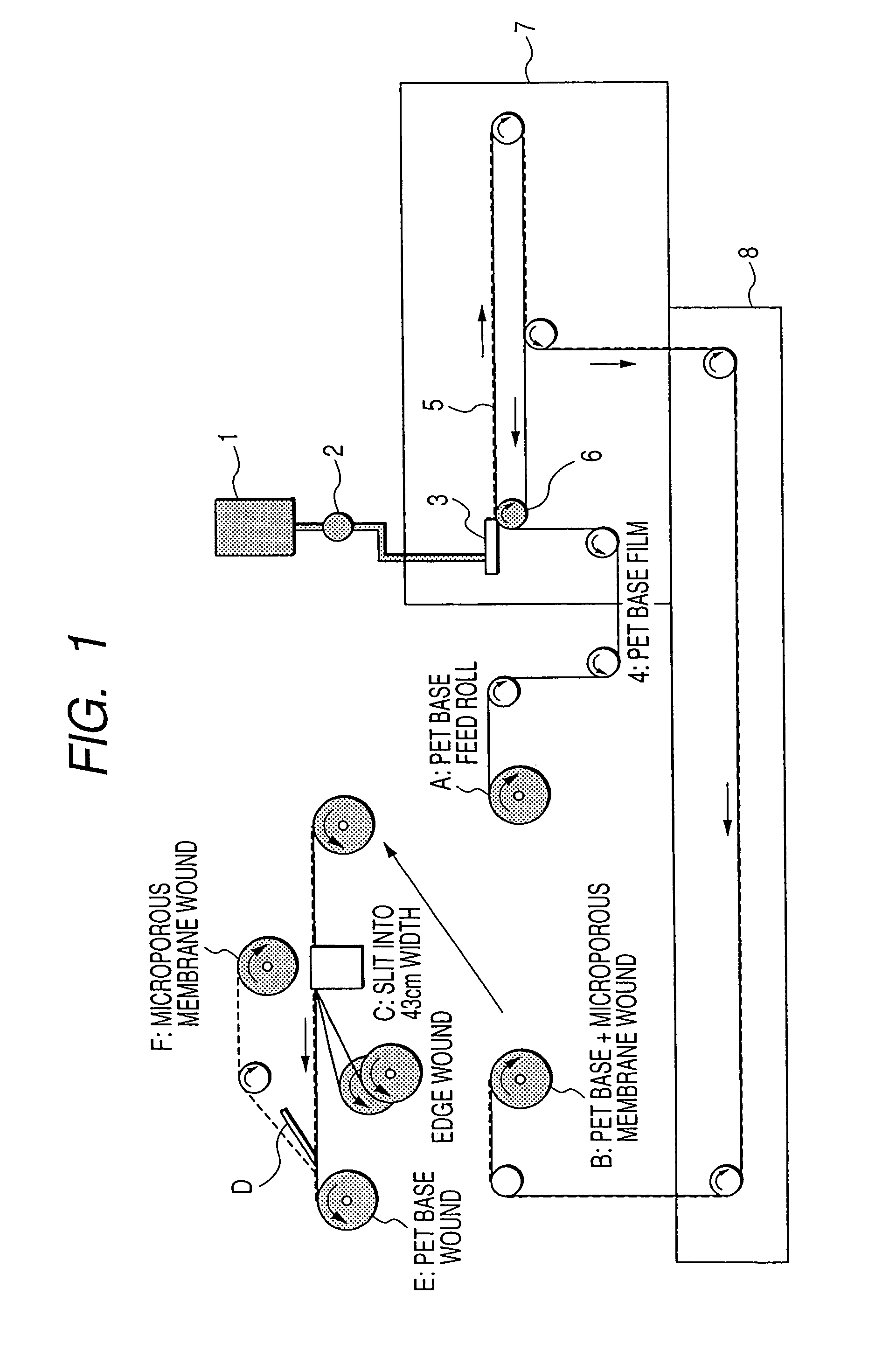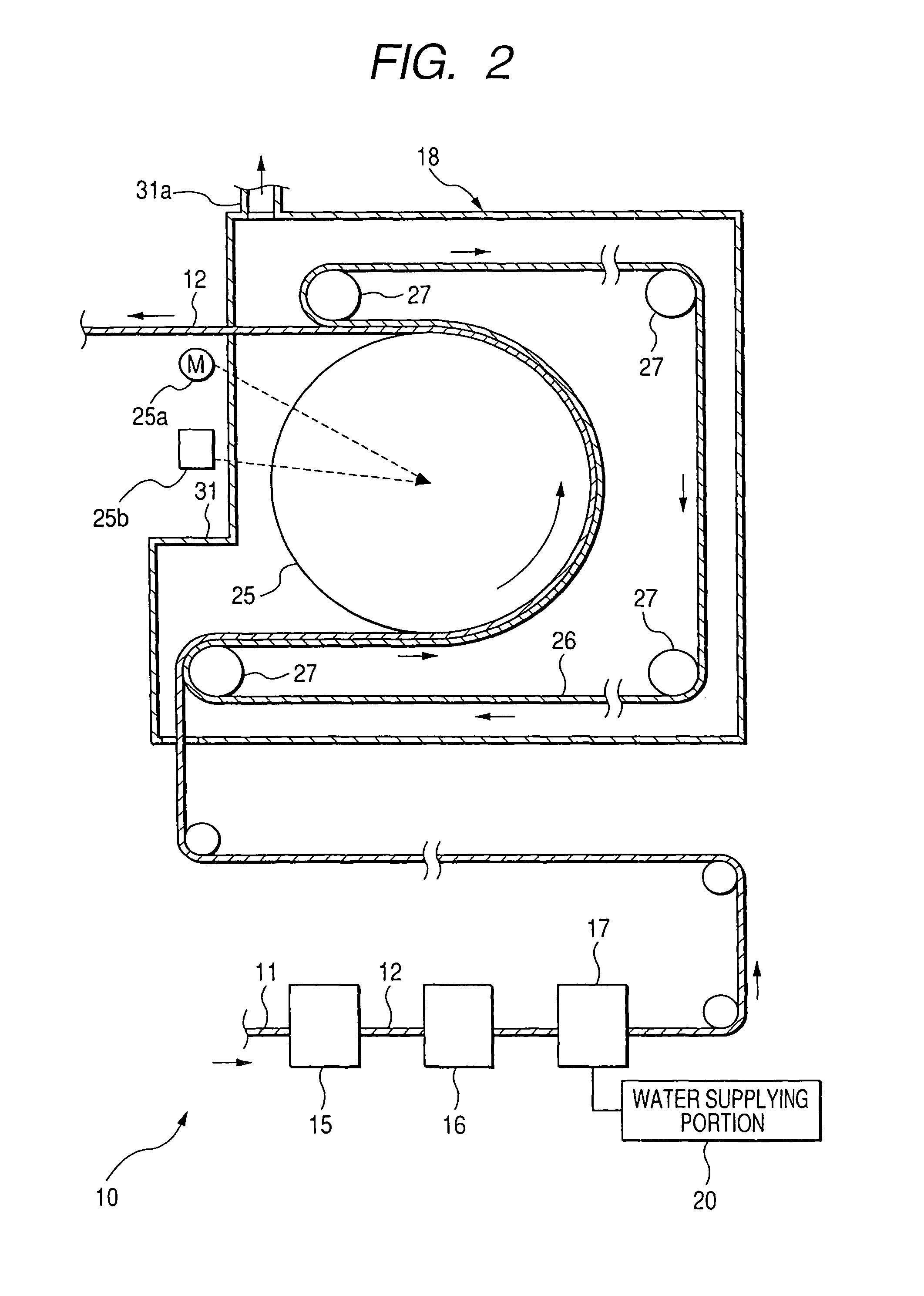Method of stably producing microporous membrane and use thereof in method of separating and purifying nucleic acid
a microporous membrane and pore diameter technology, applied in the direction of membranes, filtration separation, separation processes, etc., can solve the problem of taking remarkably much time to separate and purify nucleic acid, and achieve the effect of reducing longitudinal locality of membrane properties such as pore diameter and stable quality
- Summary
- Abstract
- Description
- Claims
- Application Information
AI Technical Summary
Benefits of technology
Problems solved by technology
Method used
Image
Examples
example 1
(1) Preparation of Nucleic Acid-Adsorbable Microporous Membrane
[0175]A dope of cellulose ester was prepared. Referring to the dissolution method in the preparation of dope, a polymer component was firstly dissolved in dimethyl chloride. Subsequently, to this solution was added methanol by portions. To this solution were then added glycerin and purified water by portions to obtain a dope comprising little undissolved matters incorporated therein. Subsequently, the dope was filtered through a filter paper. The dope had the following formulation.
[0176]
Diacetyl cellulose2.42%(acetylation degree: 54.5%)Triacetyl cellulose3.43%(acetylation degree: 60.8%)Glycerin0.18%Dimethyl chloride55.50%Methanol33.22%Purified water5.05%
[0177]The aforementioned dope was charged into a dope tank ((1) in FIG. 1) with a temperature controller. The dope tank (1) was controlled to 35.0° C.±3.0° C. Subsequently, using a gear pump (2), the dope which had been kept at 35.0° C.±3.0° C. was pumped, filtered, and t...
PUM
| Property | Measurement | Unit |
|---|---|---|
| temperature | aaaaa | aaaaa |
| temperature | aaaaa | aaaaa |
| pore diameter | aaaaa | aaaaa |
Abstract
Description
Claims
Application Information
 Login to View More
Login to View More - R&D
- Intellectual Property
- Life Sciences
- Materials
- Tech Scout
- Unparalleled Data Quality
- Higher Quality Content
- 60% Fewer Hallucinations
Browse by: Latest US Patents, China's latest patents, Technical Efficacy Thesaurus, Application Domain, Technology Topic, Popular Technical Reports.
© 2025 PatSnap. All rights reserved.Legal|Privacy policy|Modern Slavery Act Transparency Statement|Sitemap|About US| Contact US: help@patsnap.com



